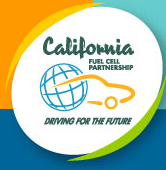 Chrysler LLC has joined the California Fuel Cell Partnership, becoming the 34th member of the organization. Chrysler says the CaFCP is valuable colloboration that encourages engineers to develop solutions for hydrogen technology at an accelerated rate.
Chrysler LLC has joined the California Fuel Cell Partnership, becoming the 34th member of the organization. Chrysler says the CaFCP is valuable colloboration that encourages engineers to develop solutions for hydrogen technology at an accelerated rate.
“We are pleased to welcome Chrysler as the California Fuel Cell Partnership’s ninth automotive member,” said Catherine Dunwoody, CaFCP’s executive director. “We’re looking forward to the new perspectives and ideas Chrysler will bring to the table as we all work together to commercialize this important transportation solution.”
 Chrysler pioneered fuel cell vehicle technology more than 10 years ago. Fuel cells release energy from the reaction of hydrogen with a catalyst and oxygen. This clean technology operates at a high level of efficiency and is true zero-emission. Hydrogen-powered fuel cell vehicles emit only pure water vapor as exhaust. Fuel cell systems are part of Chrysler’s advanced- propulsion technology umbrella, which includes efficient gasoline engines, advanced diesels and hybrid powertrain systems.
Chrysler pioneered fuel cell vehicle technology more than 10 years ago. Fuel cells release energy from the reaction of hydrogen with a catalyst and oxygen. This clean technology operates at a high level of efficiency and is true zero-emission. Hydrogen-powered fuel cell vehicles emit only pure water vapor as exhaust. Fuel cell systems are part of Chrysler’s advanced- propulsion technology umbrella, which includes efficient gasoline engines, advanced diesels and hybrid powertrain systems.
Founded in 1999, CaFCP members have placed 188 fuel cell passenger vehicles and transit buses on California’s roads. In addition, CaFCP members have built 27 hydrogen stations, with 11 more planned, forming the largest hydrogen infrastructure in the world.
CaFCP describes itself as an organization of auto manufacturers, energy providers, fuel cell technology companies and government agencies, where members work together to promote the commercialization of hydrogen powered fuel cell vehicles.

